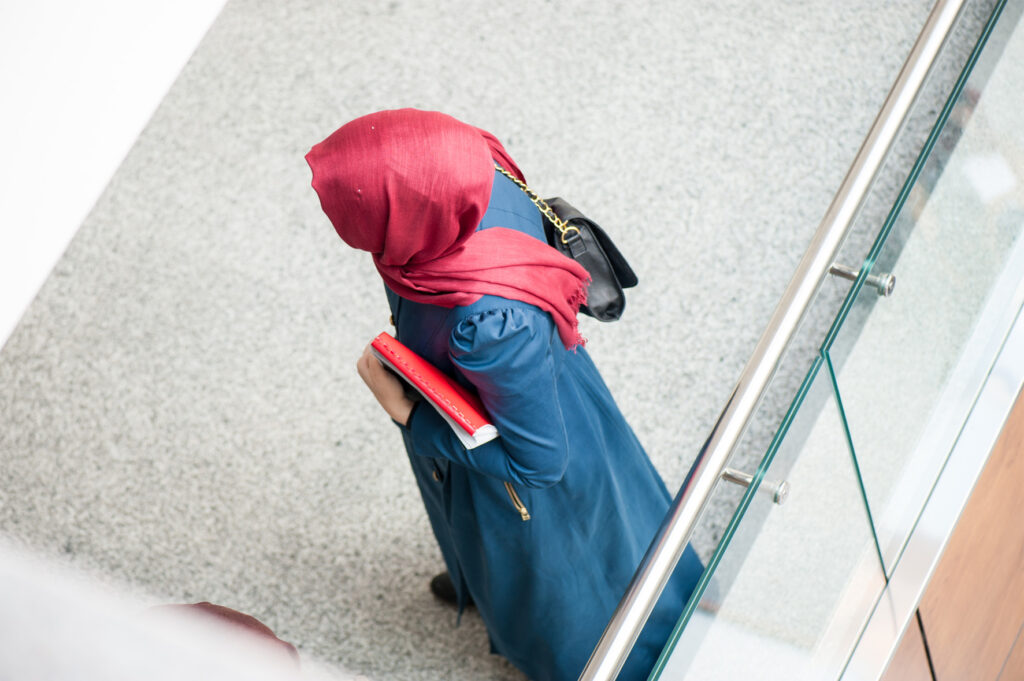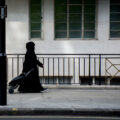Islam and the educational gender gap in Europe
Islam and the educational gender gap in Europe
Gender inequality when it comes to education is still a prevailing reality. How is the educational gender gap visible for Muslim women in Europe?
This article was written in preparation for our round table on Politics of Education
Educational gender gap: layers of marginalisation
Gender inequality when it comes to education is still a prevailing reality in Europe. According to the web dossier on equal access to education by the official website of the European Union, gender inequality persists in this area.[1] The European University Association (EUA) also sees a disparity when it comes to women in leadership positions in educational institutions in Europe. Out of the 47 member countries of the EUA, only 12% have female rectors and only 28% of the member countries have full professors who are female.[2] Even the process of curriculum building and the production and reproduction of knowledge are still dominated by male voices.
The gender gap is very much connected with other societal factors such as class, ethnicity, and other minority markers. Most European women who follow Islam, for example, have all of these markers in mind, especially when it comes to access to quality education and the most remarkable reminder of their being Muslim: the hijab. How then does the performance of Islamic femininity interact with European secularism when it comes to education and the building of the curriculum in the European educational system?
Secular paternalism and Muslim women’s education
In 2003, former French President Jacques Chirac set up the Stasi Commission to reflect upon the application of the constitutional principle of secularism, known in France as laïcité. After interviewing more than 140 representatives which included teachers, intellectuals, politicians, religious leaders, and equal-rights activists, the Commission acknowledged the tensions building up between freedom of worship and the neutrality of the State, especially in the widely public-funded French education system.[3] Following the conclusions of the Commission, the French Parliament voted to ban all “symbols or garb which show religious affiliation in public primary and secondary schools.”[4]
The prohibition of religious head coverings for Muslim women in France, according to Cécile Laborde, is a paternalistic performance of the French state.[5] According to her, it is an imposition by the republic on Muslim women that mimics patriarchal impositions on women regarding behaviour, modesty, gender roles, and other cultural codes which have been taught in schools. While autonomy is being upheld by the French republican educational system, the kind of autonomy that is being reproduced by the curriculum entails a detachment from one’s religious identity in order to not be ‘brainwashed’ or manipulated by religious extremists.[6] According to the point of view of the paternalistic state, the religious head covering of Muslim women is not just a religious marker but a hindrance to intellectual autonomy and free decision-making.[7]
Laborde sees a tension between the appeals of Muslim women to reclaim their agency by wearing their hijabs as their marker for individual expression and the classical ideal of individual autonomy expressed by the hijab ban. The presupposition of autonomy that is detached from religious identity is critiqued because religious expression can also be an exercise of one’s freedom, particularly in settings where there are already wide gaps in education for women.[8] Sandra Feder would interject that banning the headscarves in French public schools has been a major obstacle for Muslim women to even finish their education, citing that discrimination caused by the policy became a major factor for this injustice.[9] Limiting women’s educational access due to a piece of clothing therefore becomes counterproductive when there is already a gender disparity in knowledge production for those who advocate for women’s autonomy which includes freedom to express religious belonging in the public sphere.
More ‘classical’ French feminists, on the other hand, supported the recommendations of the Stasi Commission. Prominent French feminist intellectuals such as Élisabeth Badinter and Sylviane Agacinski claim that “always and everywhere, the veil has represented submission to male authority.”[10] According to them, wearing a hijab is a practice rooted in patriarchal notions of gender roles and women’s modesty, conspicuously displayed by head covering. In certain contexts, familial and peer pressures leave many young women with no other option than to wear the hijab. Julie Muret, from the association Osez le féminisme, considers the hijab as a hindrance to the emancipation of women, as it is a sign of “inferiorising and delegitimising women in the public space.”[11]
Interestingly enough, French feminism seems to branch into two different trends that pursue the same end — gender equality and the fight against patriarchy — but through different means. One perspective seems to look at a particular religious expression as a hindrance to the emancipation of women and an imposition by patriarchal structures. On the other hand, some of these women view the freedom of religious expression as a venue where one finds true womanhood and at the same time, emancipation from societal impositions.
While the debate is far from being settled, Belgium provides us with a practical example to contribute to the ongoing conversation. After some years of appealing to the education authorities by Islamic interest groups, Belgium rescinded its ban on the hijab in educational institutions in Wallonia (French-speaking part of Belgium), which is a stark contrast to the laïcité applied in France. Francophone Muslim women in Belgium welcomed the relaxation, with one of them saying that it will impact them in such a way that they will be able to be financially secure and determine themselves.[12] Note that she did not even mention freedom of religion in her statement regarding the matter. If the state’s goal is human flourishing, and that goal is shared by Islam,[13] then this shared ideal can be a crucial principle for policy-making for marginalised and disadvantaged sectors which includes religious minorities.
Negotiating the place of women in education
There are existing barriers to women in education. As it is, women on the basis of their sex are negotiating their place in the current structures of knowledge production in the European context and adding a barrier based on religious expression is counterproductive to the flourishing of Muslim women. These hindrances are already reinforced by the context around them, particularly by their parents and peers; life is difficult enough for women particularly in more marginalised backgrounds. While women are determined to learn and to surpass their hurdles, it is being made more difficult for them by the patriarchal structures that have been reinforced by their cultural contexts both in their religious communities and in the public sphere.[14]
Before even talking about women taking leadership positions in European educational institutions, addressing barriers imposed by the state for women belonging to religious minorities should be addressed. It is counterproductive for the state to impose educational sanctions on the basis of religious expression or affiliation since it is its duty first and foremost to help society progress, and religion remains to be an important sector of society. Perhaps a laïcité that is open to dialogue and includes instead of imposes barriers would be beneficial for sexual minorities and religious minorities to be able to engage with society. Doing so will provide the opportunity to elevate the discourse in policy-making and leadership particularly in the production, reproduction, and dispensation of knowledge.
No woman, regardless of religious affiliation or socio-economic background, should be left behind, especially in this regard.
Would you like to learn more about similar topics? Visit the EARS Dashboard for more information.
[1] Equal access to education | Capacity4dev
[2] Female university leadership in Europe
[3] Rapport au Président de la République de la commission de réflexion sur l’application du principe de laïcité dans la République, Commission de reflexion sur application du principe de laicite
[4] Loi no 2004-228 du 15 mars 2004 encadrant, en application du principe de laïcité, le port de signes ou de tenues manifestant une appartenance religieuse dans les écoles, collèges et lycées publics, https://www.legifrance.gouv.fr/codes/article_lc/LEGIARTI000006524456/2021-04-25
[5] Laborde, Cecile. State paternalism and religious dress code. Oxford University Press. 12 October 2012. State paternalism and religious dress code accessed 12 April 2021
[6] ibid
[7] ibid
[8] ibid
[9] Stanford scholars report French headscarf ban adversely impacts Muslim girls
[10] Sylviane Agacinski: les mises en garde d’une féministe contre les dérives du féminisme, Eugénie Bastié, in Sylviane Agacinski: les mises en garde d’une féministe contre les dérives du féminisme
[11] Égalité, voile, genre… Féminisme, la bascule des générations, Marianne Meunier, Blanche Marès, Isabelle Cormaty, in Égalité, voile, genre… Féminisme, la bascule des générations : 11/09/2020
[12] Lifting of hijab ban in southern Belgium offers hope for Muslim women






